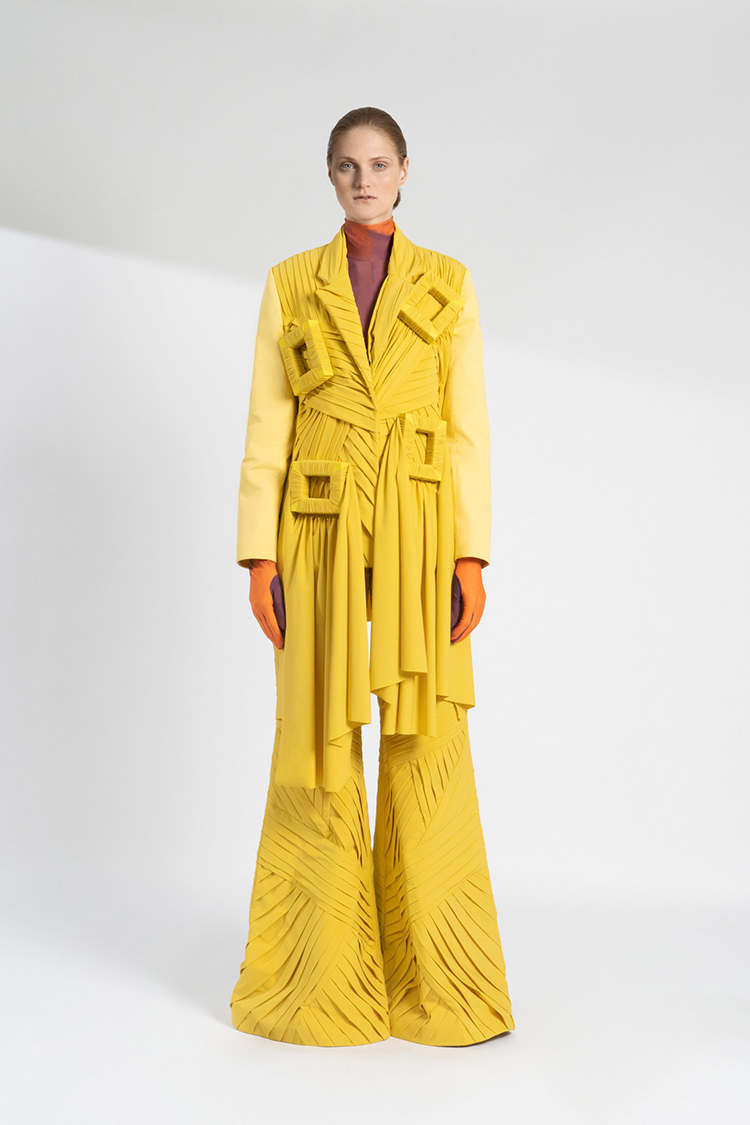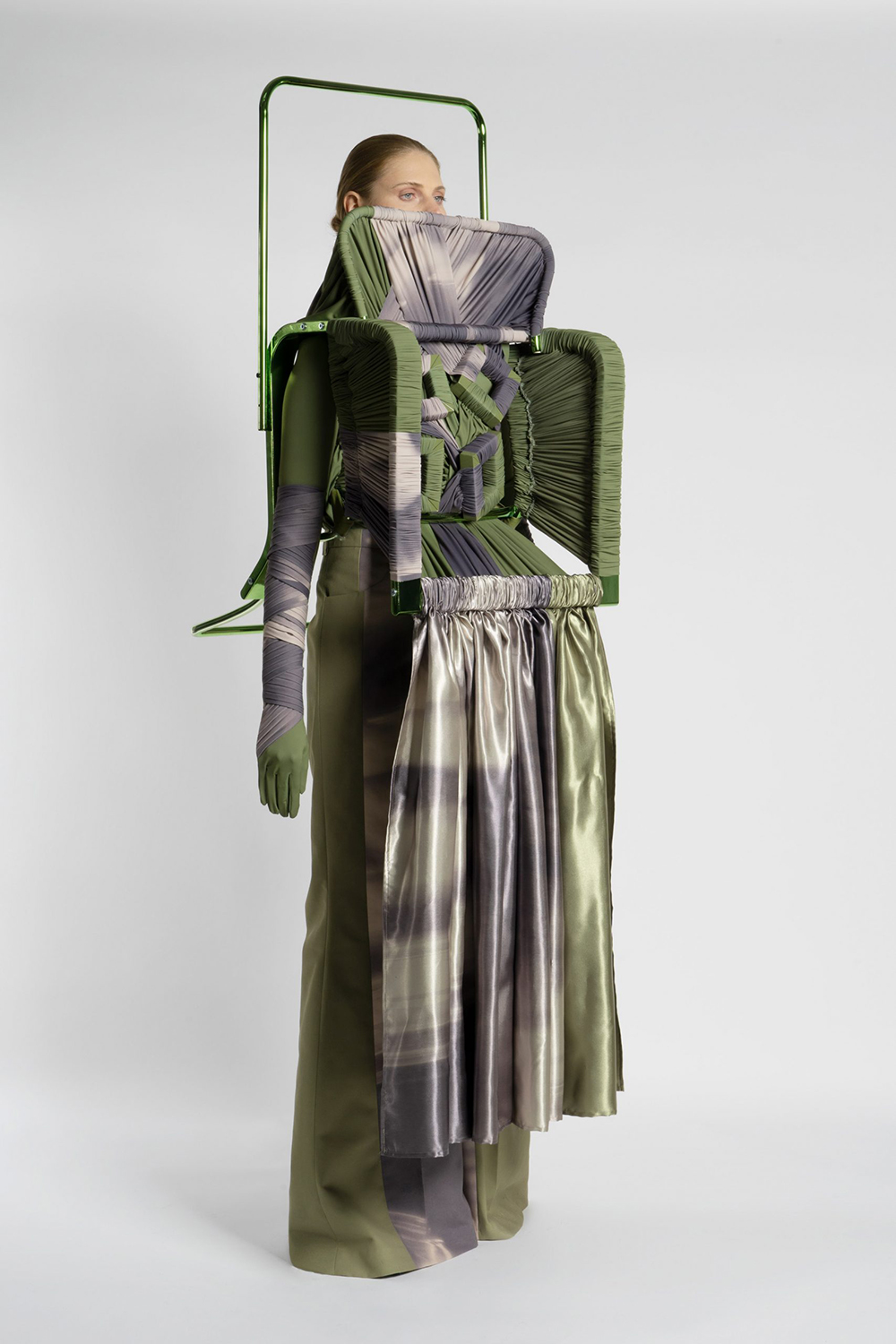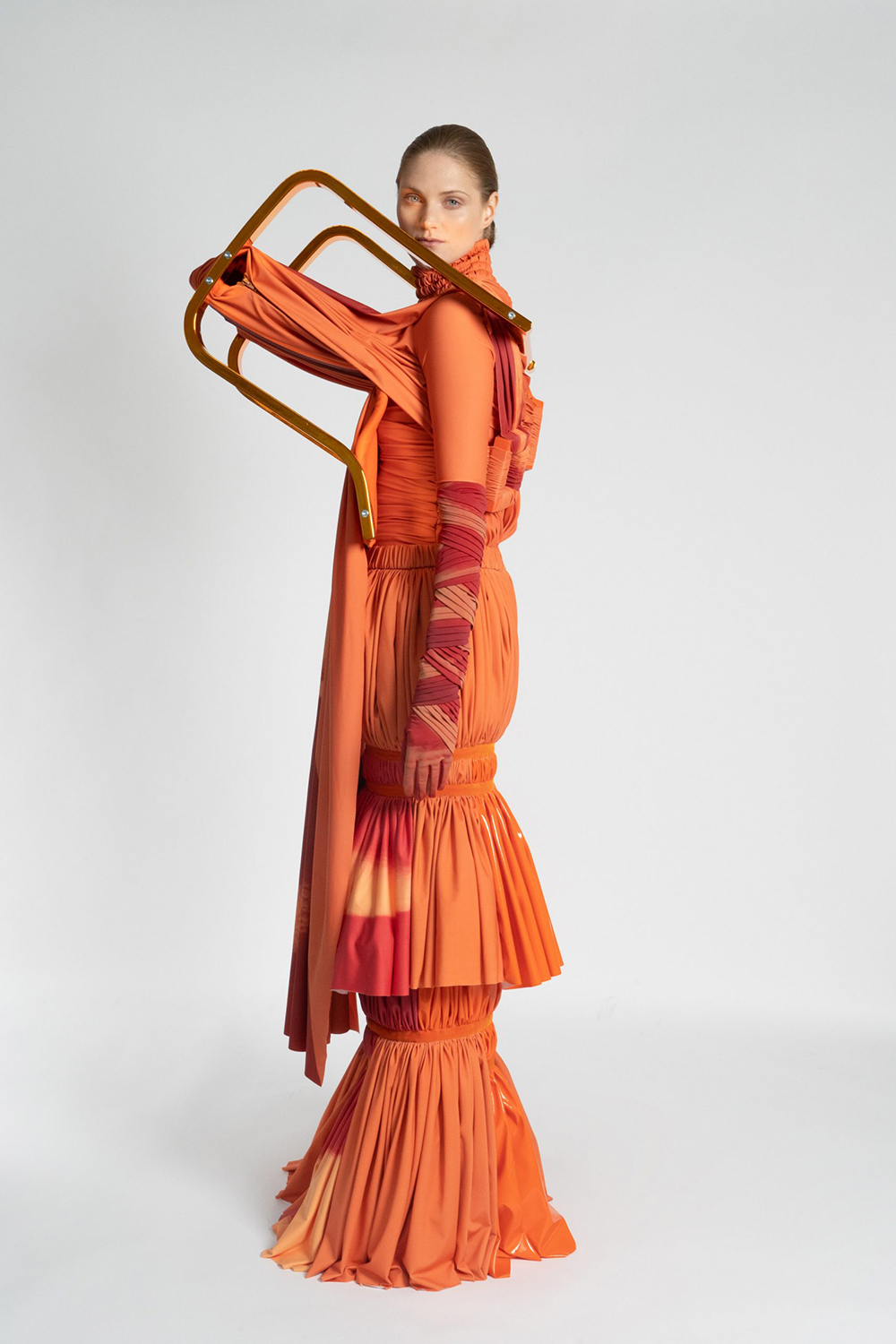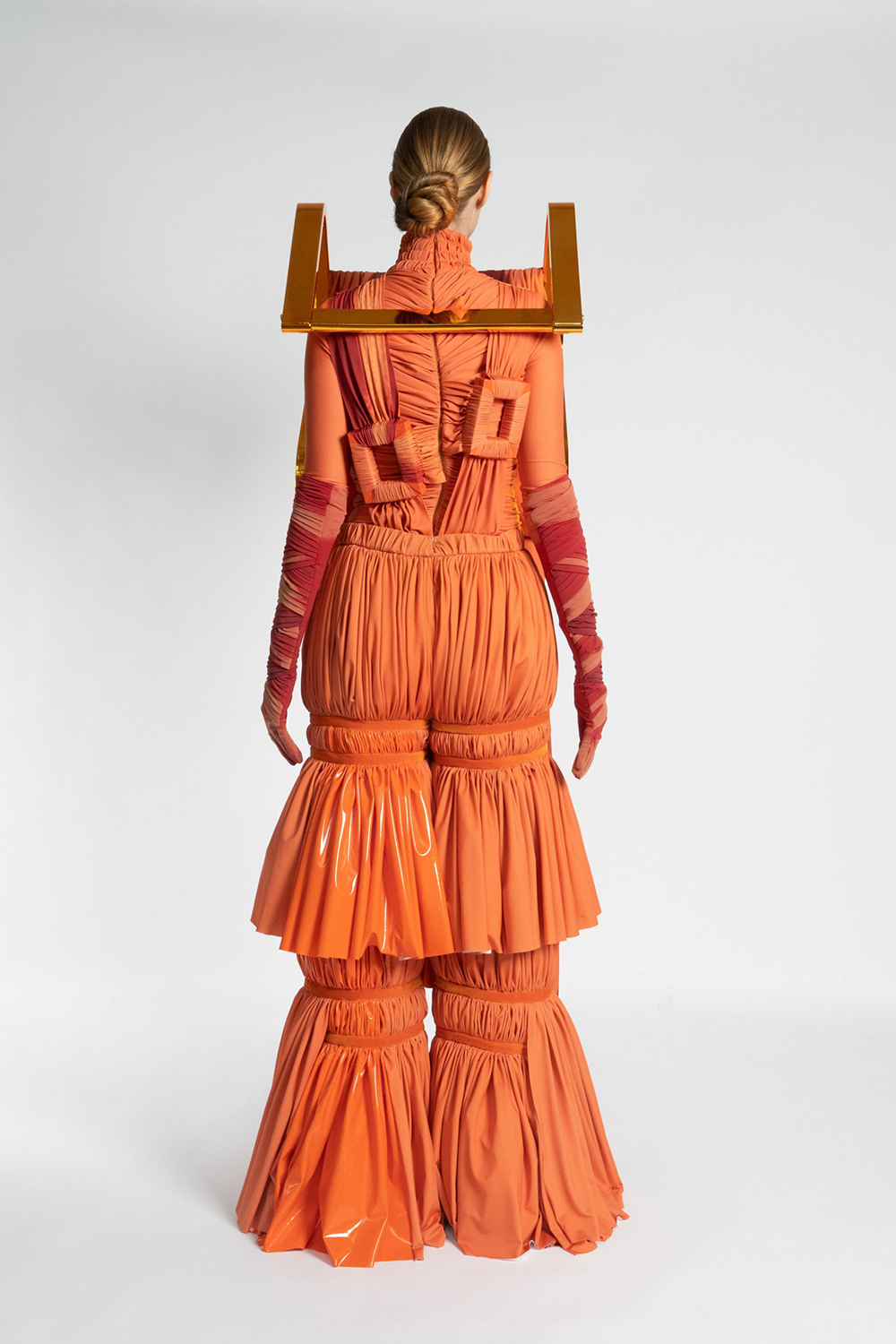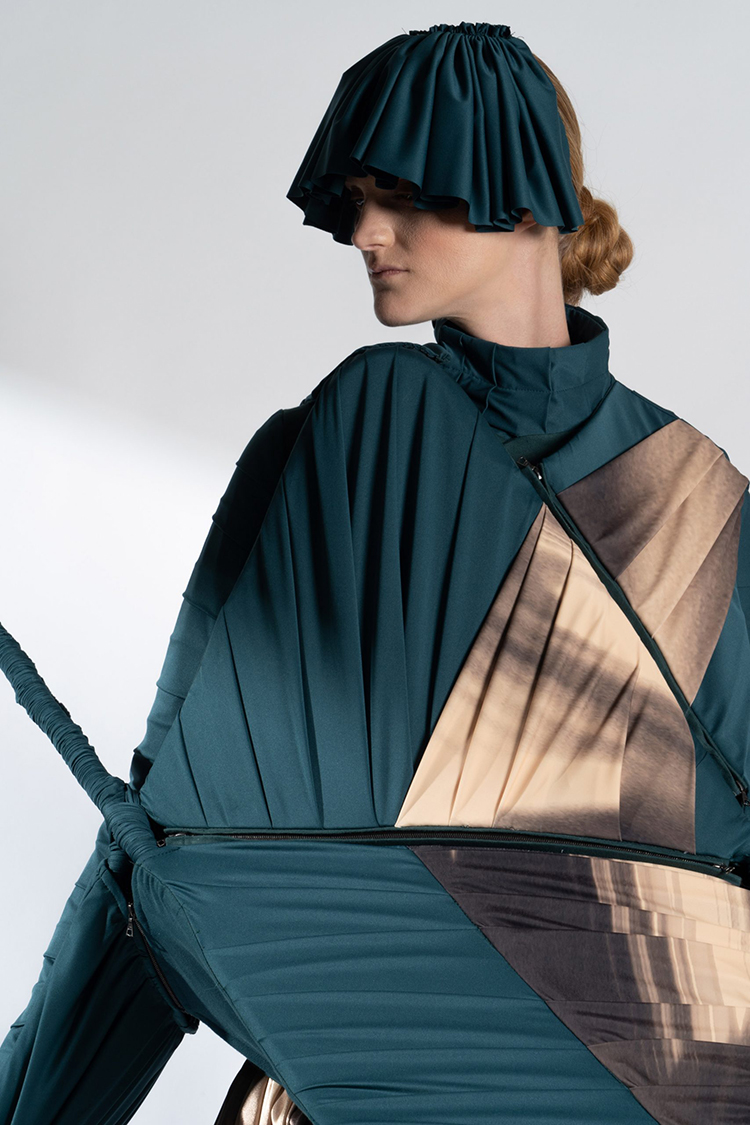
Central Saint Martins graduate Jessan Macatangay incorporated deconstructed chairs into his striking fashion collection, to symbolise how people carry the weight of personal struggles.
Titled Finding Beauty and Power in Struggle, the collection is comprised of five different looks that become progressively lighter and less bulky, as they gradually include fewer furniture elements.
Each piece incorporates pieces of deconstructed chair frames and buckle-like elements, as well as layers of drapery made from lycra jersey and silk satin.
In the first look, the whole chair frame has been built into the garment, while in the second and third looks several parts of a frame have been woven into the fabric.
The structural elements are then reduced to buckle-like designs, based on the structure of ladderback chairs, in the last two looks.
As the designer explains, these small square wooden buckles represent “the tiny remaining fragments of struggle” left in individuals – camouflaged, but still visible.
“I used the chairs to represent struggle,” Macatangay told Dezeen. “Even though a chair is made for you to rest, when you put it in a different position on a body, you give it an opposite power that becomes heavy and painful.”
“Everyone has struggle. That is unavoidable. So, the best solution is finding beauty in struggle, because at the end of every struggle is success and power. But how do you find beauty in struggle?”
“The collection starts from a big sculpture on a body, which then becomes smaller on the subsequent looks,” he continued. “This signifies that when you face a struggle, it becomes smaller and eventually becomes part of your body, making you stronger, more powerful and a better person.”
For the first look in the series – the teal-coloured garment – Macatangay attached several bent copper tubes to the front of a chair he had at home. The chair is known as a butterfly, or Hardoy, chair, and the designer used epoxy and rivets to give the frame more volume and a more interesting shape.
The second, olive-green, look and the third orange garment both incorporate parts of a bent-wood armchair frame, which was deconstructed and spray-painted to achieve a chrome effect.

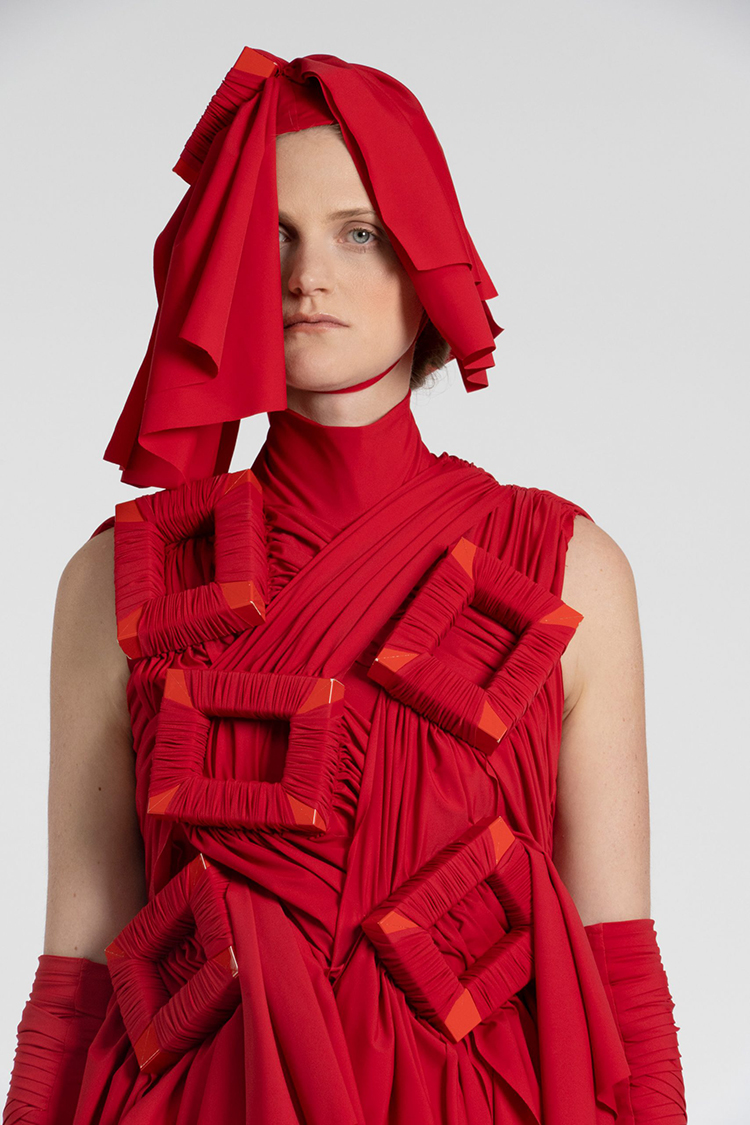
The final yellow and red looks saw the designer wrap fabric around mitred MDF wood squares to create buckle-like shapes, before sewing them to the back and chest of each garment.
Macatangay took inspiration from the photography of Dutch artist Melanie Bonajo, as well as the work of Austrian sculptor Erwin Wurm – specifically his one-minute sculptures, which see models pose with ordinary objects in unusual ways.
As Macatangay explained, the process of making each garment and the materials used were adapted at the last minute as a result of the coronavirus pandemic.
“Because of the lockdown, the fabric supplier that I was specifically working with abruptly closed,” said the designer. “So, this made me find other options, which included dyeing most of my fabrics and digitally printing some.”
“For the metal and wooden structures, everything was supposed to be made from scratch using the workshops at university,” he continued. “However, because the school closed and no 3D printing shops were open, I used a lot of scraps and existing chairs I had at home.”
Despite the unexpected hurdles, Macatangay finished his collection in two months, and found that it added to its value.
“The process of actually achieving and making these changes made me realise that this situation completely reflected the concept of my graduation collection – finding beauty and power in struggle,” he said.
“As I dealt with my disappointment about the whole situation, I found myself re-inspired and more resilient not to give up. I felt empowered seeing my final garments come together under these circumstances.”
As a replacement for the regular physical fashion show, London’s Central Saint Martins (CSM) held its first digital fashion showcase on 17 June, for which students were asked to submit a 20-second video showing the concept of their collection.
This led Macatangay to concentrate less on the way the garments would move and more on the many details that comprise each look.
“To present my work digitally, I had to change my thinking completely,” he explained. “I had to think more strongly about how people would consume my work, and less about the moment that runway represents.”
“[The show] was amazing – one of kind and just very relevant,” added the designer. “I think CSM found the best alternative way for us to communicate our work in a way that everyone is now used to.”
